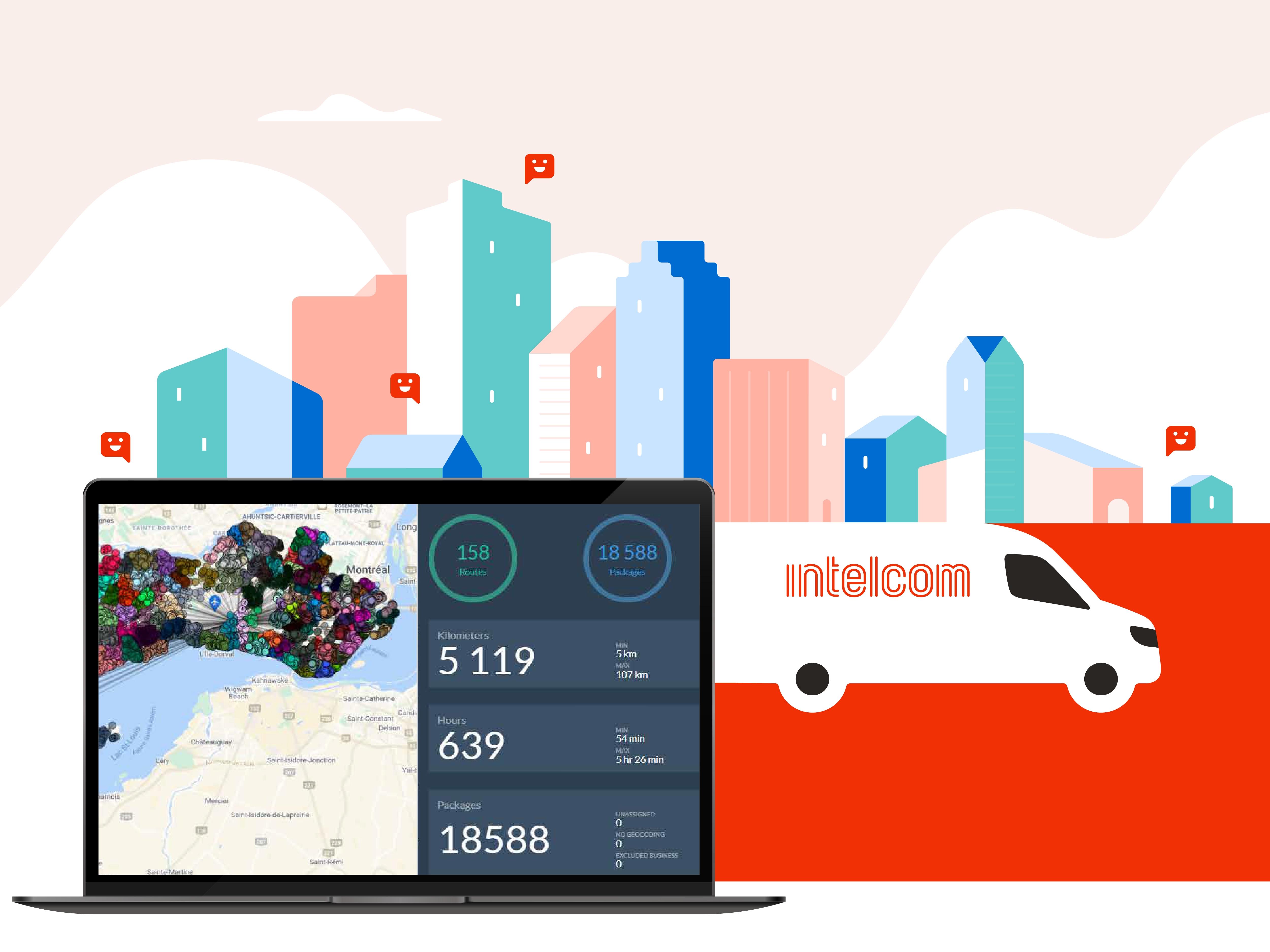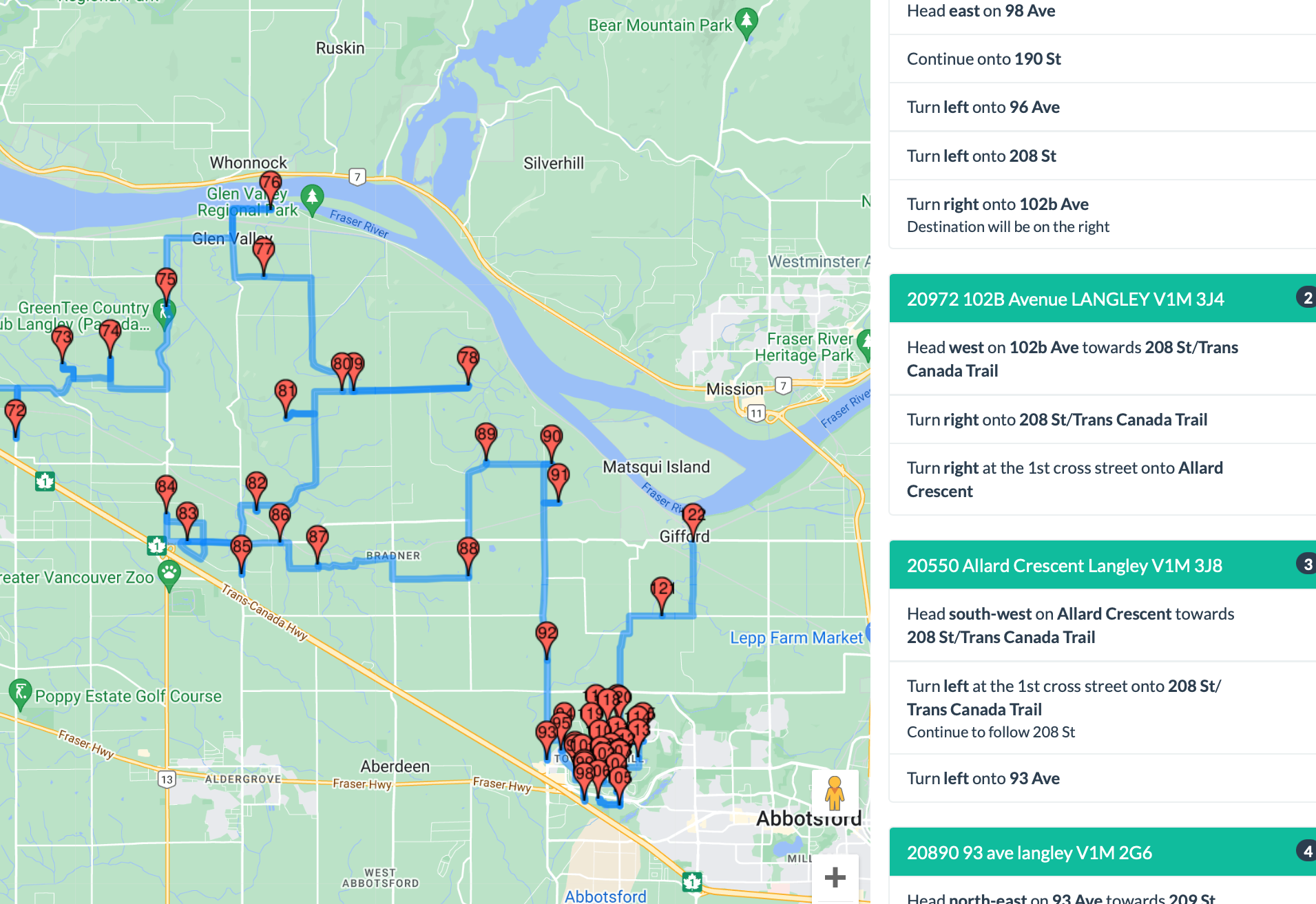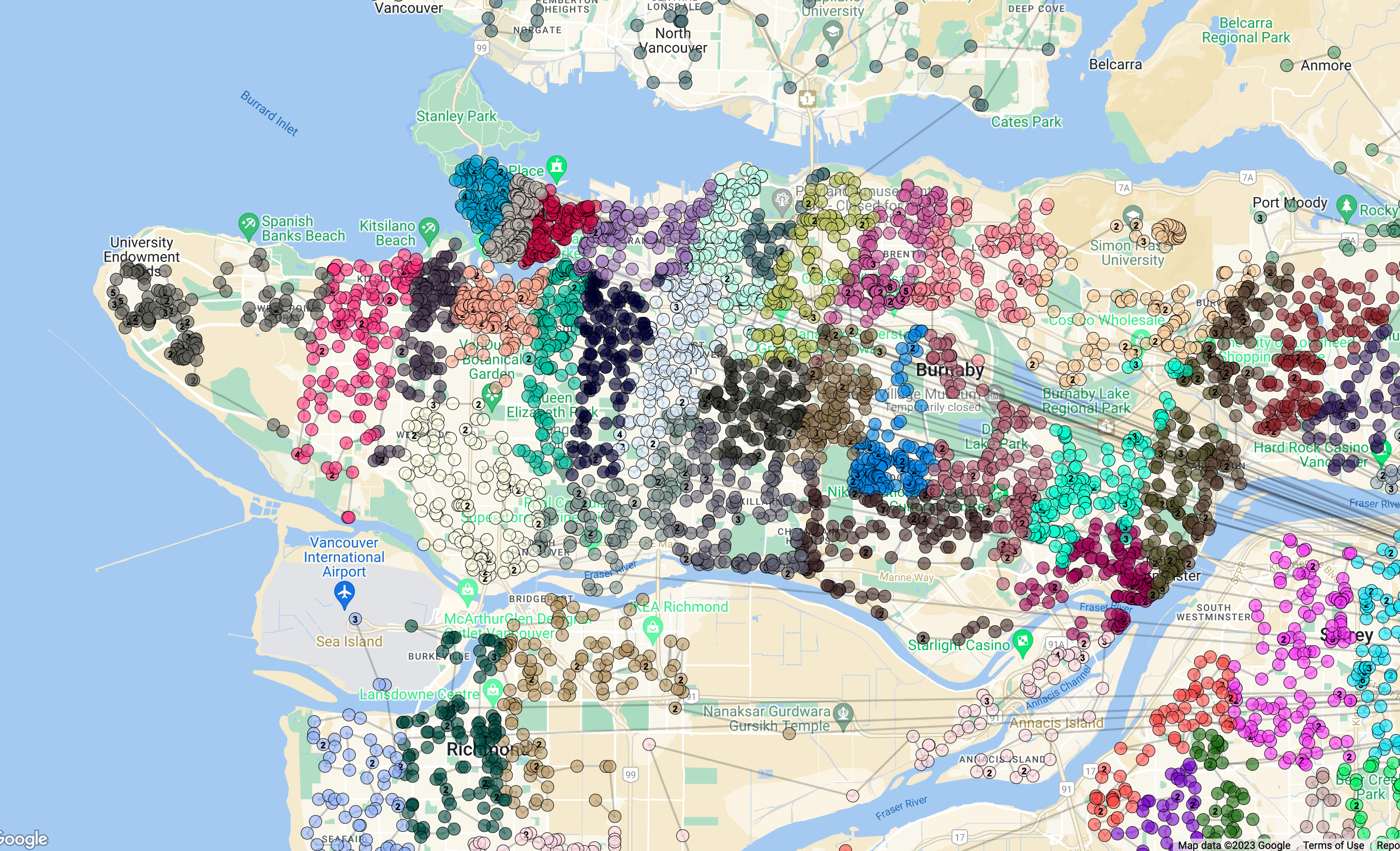Articles
Taking control of the last-mile: internalizing our VRS

In case you missed it, 2023 will be a big year for Intelcom in the tech space.
Yes, we do last-mile deliveries; yes, we are a transportation logistics operation; but beyond that, we are a fast-growing technology company that is making moves to provide our clients, customers and consumers with ahead-of-the-curve tech solutions to shipping’s most significant logistical challenges.
At the forefront of our tech to-do list is internalizing our Vehicle Routing System (VRS), the system that ensures drivers have access to the most efficient routes with the most responsive and intuitive routing software possible.
Our VRS optimizes over 4,000 routes across Canada daily, and hundreds of data points inform the distribution directions for drivers. This system is the final step of the parcel sorting process, and is where many different geographic and logistic realities can affect what may have previously been an established “best route”.
There is no magic bullet solution that will work for each location in the country, so agility and adaptability is crucial.
What does internalizing our VRS look like? Taking control of the platform itself, hosting it in our environment, and reworking the code so that we can make incremental changes that will help us to stay at the cutting edge. It also means an in-house competency boost, where internal employees now own the knowledge of how to improve the tech, and quickly!
Share this article
Getting to the Root of the Routes
We caught up with Jacques Forcier, Senior Director of Research and Development, to talk routing.
“What I like to assess is root cause analysis: When there is a problem, are we trying to tackle the symptoms or the cause? If we focus on the symptoms, the problem will keep recurring. Versus doing our homework, finding the root cause and addressing that once and for all. This is what our team is focusing on.”
Regarding routing, three essential pillars impact optimization: Grouping, Clustering and Sequencing.

“There is a lot of complexity regarding this,” said Jacques, “like bodies of water impacting the distance from a driver’s perspective, but not translating on the map. As a human, your brain tells you what makes sense and what doesn’t, but from a computer processing perspective, you need to implement rules for optimized clustering.”
In other words, computers need information, but that information doesn’t exist in most cases.This is the root cause. The question then becomes how do we use the tech to define these optimization levers?
A Look Under the Hood
Ask any auto mechanic how to improve your vehicle’s performance, and the first thing they’ll tell you is to pop the hood.
Until recently, Intelcom’s VRS has been supported by trusted vendors, and that relationship continued successfully to evolve the platform to suit Intelcom’s innovative vision to date.
In 2023, the process of taking over that VRS and managing it internally will afford Intelcom a greater range of agility and the ability to build on existing internal skill sets.
Eric Marchand, Vice President of Technology, explained, “This will allow us to be more flexible and closer to the business; we can make it evolve with more ownership in our internal capacity; to be more agile and rapid to make incremental improvements to the platform.”
He continued, “We’ll be starting to open the hood, look at the engine, and become the mechanics of our own car.”
To carry on the metaphor, the team is starting to get their hands in the engine and finding ways to make the system even more flexible. Employing more in-house engineers gives Intelcom the extra edge to be more tech-focused than ever before.
The Benefits of Internalized Tech
Internalizing Intelcom's VRS has a bottomless catalogue of benefits for clients, customers, and consumers. There will be a greater ability to scale with demand, enhanced control and risk mitigation, flexibility to account for changing variables like weather and traffic for route optimization, maximized productivity of drivers and more.
These incremental moves will save our clients and drivers money in an industry where efficiency is everything.
"We have relationships with businesses who have to make money. Whatever improvements we make have to be a win-win for them and us: It's a pillar of our business model. We create profitable routes for Intelcom and for our independent delivery contractors (IDCs). We want our IDCs to make money and reinvest in their fleets, so we need to be resequencing and being agile every single day." says Eric Marchand.

Everything evolves, people, products, etcetera. We will now have the ability to plan ahead and evolve and assess the tech impacts as industry changes come to light. There are only advantages to internalizing.
Jacques Forcier
Senior Director, Research and Development
Jacques Forcier
Senior Director, Research and Development
Updating the Content, Not the Container
Eric Marchand explained what clients can expect, "From a client perspective, they should see us addressing the issues that they identify quickly and optimizing the routes. Core issues will be addressed, and they will see a change in output, but it's the content that will be updated, not the container - for now."
And for consumers, Jacques Forcier shared, "They will have a better experience, more visibility over the operations, earlier notification of issues, better feedback over the resolution of issues, and be notified proactively of changes and delays."
Every minute gained in the transportation logistics industry has a noticeable impact on all involved, and that is why internalizing the VRS is a top priority for Intelcom.
"Things we have been dreaming of doing are now in the realm of possibility." Eric concluded, "We are now the masters of our own destiny."